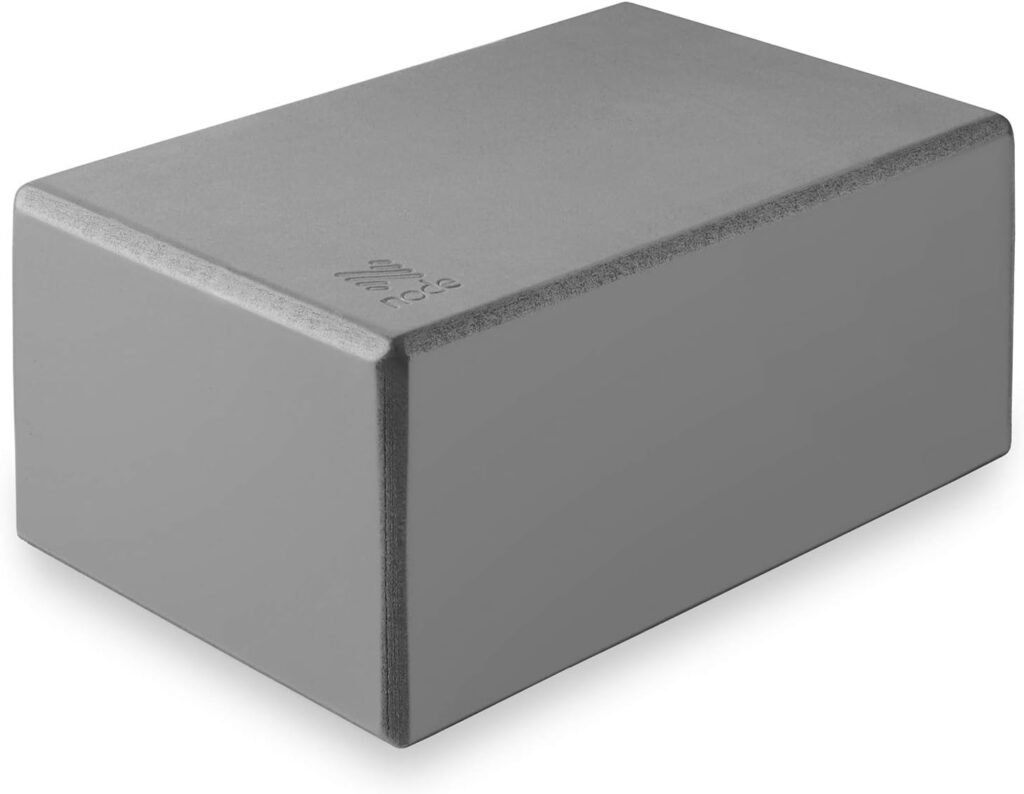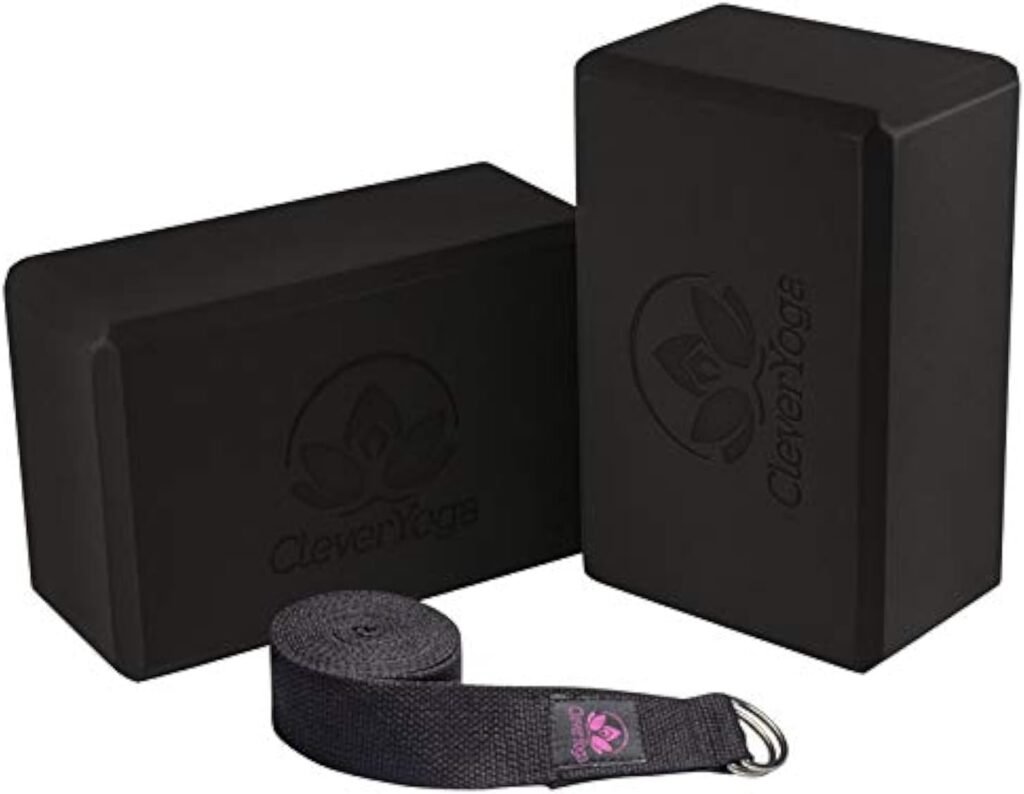Ever tried touching your toes in a forward fold and felt like your body said, “Not today”? Yep, been there. When I first started yoga, I thought flexibility was something only dancers had—but yoga blocks proved me wrong. These simple little tools can seriously change the game for beginners and seasoned yogis alike. In this guide, I’ll walk you through the best yoga blocks for improving flexibility, based on personal use, expert picks, and real talk about what works. If you’re looking for yoga tools for beginners or ways to safely ease into deep stretches using yoga blocks, you’re in the right place. Let’s get into it—your hamstrings will thank you later.
What Are Yoga Blocks and Why Are They Helpful?
Yoga blocks are small tools that help you move better in your practice. They give you support when your hands can’t reach the floor. If you’re new to yoga, they make hard poses feel easier and safer.
Most blocks are made from foam, cork, or wood. Foam is soft and light. Cork feels firm and strong. Wood is hard and heavy. Each type works well—it just depends on what you like.
These blocks help with balance, form, and deep stretches. They let you hold poses longer without strain. Many people use them to ease tight spots in the hips, legs, or back. If you want to improve flexibility with yoga blocks, this is a great place to start.
What Are Yoga Blocks and Why Are They Helpful?
Yoga blocks are simple tools that make yoga easier. They help you reach the floor when you can’t quite get there. These blocks support your body and make poses safer, especially when you’re starting out.
Yoga blocks come in three main materials: foam, cork, and wood. Foam is soft and light, which is great for beginners. Cork feels firm and is eco-friendly. Wood is solid and strong, but it’s heavier. All three types are helpful, so it’s about choosing what works best for you.
These blocks help with balance, form, and stretching. If you’re trying to reach deeper in a stretch or hold a pose longer, blocks will make it easier. They are especially helpful for tight spots in the hips, legs, and back. If you want to improve flexibility with yoga blocks, they are the perfect starting point.
How Yoga Blocks Help Improve Flexibility
Yoga blocks are your best friend when it comes to deep stretches. They help you reach a little further and hold those stretches longer. Think of them as a bridge to go deeper into your practice without straining yourself.
When you use yoga blocks, they give you support and stability. For example, if your hamstrings are tight, blocks can raise your hands or feet so you don’t feel like you’re forcing a stretch. This lets you breathe and relax into the pose, making the stretch more effective.
Blocks also help you hold poses for longer periods. This can be great for loosening up tight hips, legs, or shoulders. If you’re trying to improve flexibility with yoga blocks, they can help you ease into poses slowly, reducing the risk of injury.
Top 5 Best Yoga Blocks for Improving Flexibility
Let’s look at the best yoga blocks for flexibility. These blocks will help you stretch better and feel supported. Here are our top picks:

1. Heath Yoga Blocks – Most Durable Foam Option
Heath Yoga Blocks are strong and light. They last a long time and work well for deep stretches. Their soft foam makes them easy on your body. If you want a block that can handle regular use, this is a great choice.

2. Gaiam Yoga Block – Best for Beginners
Gaiam blocks are soft but firm enough to give you support. They come in bright colors that make yoga fun. If you’re new to yoga, this block will help you get the most out of your stretches.

3. Cork Yoga Blocks by Node Fitness – Best for Stability
Node Fitness Cork Blocks are solid and sturdy. They are eco-friendly and offer great support. If you need a stable base for your stretches, this block is perfect for you.

4. Clever Yoga Blocks and Strap Set – Best Value Bundle
The Clever Yoga Block Set is a good deal. It comes with two blocks and a strap. This set helps you stretch deeper and hold poses longer. It’s a great option if you’re on a budget but want quality.

5. Rehut Yoga Block – Best Budget Pick
Rehut Yoga Blocks are cheap but strong. They help with balance and stretching. These blocks are light, so they are easy to carry with you.
Tips for Choosing the Right Yoga Block
Choosing the right yoga block is simple. Here are a few tips:
1. Material
Yoga blocks come in foam, cork, or wood. Foam is light and soft. Cork is firm and eco-friendly. Wood is solid and strong.
2. Size and Shape
Most yoga blocks are rectangular. The standard size is 9” x 6” x 4”. This size works well for most poses.
3. Grip
Good grip is important. Foam blocks are smooth. Cork and wood have a better texture. A strong grip helps you stay stable.
4. Portability
If you travel with your yoga gear, choose a light foam block. It’s easy to carry. For home use, cork or wood blocks give more support.
Final Thoughts: Stretch Smarter, Not Harder
Flexibility isn’t about pushing yourself too hard. It’s about going at your own pace. Yoga blocks help you stretch deeper, without overdoing it. They support your body and make stretching safer.
Flexibility takes time. With the right yoga block, you can make steady progress. Start slow, stay consistent, and enjoy the process.
Yoga blocks are your tool for stretching smarter. They help you reach your goals without strain. Stick with it, and you’ll soon feel more flexible and confident in your practice.

